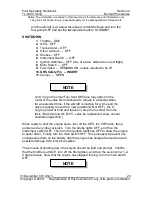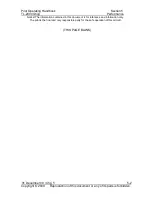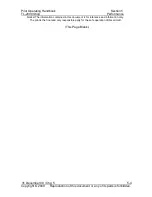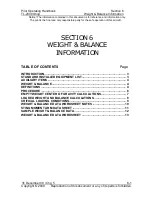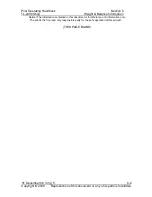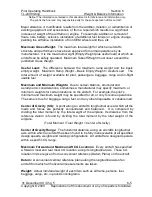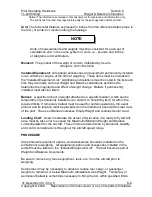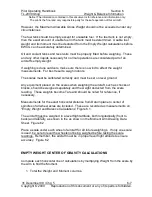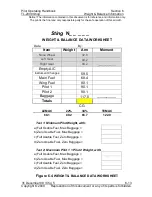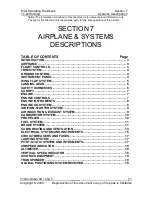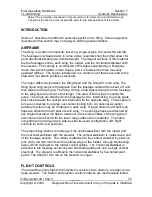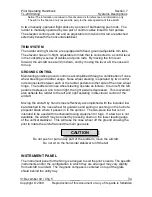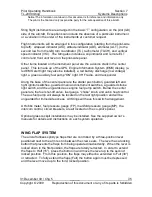
Pilot Operating Handbook
Section 6
TL-2000
Sting
Weight & Balance Information
Notice! The information contained in this document is for reference and information only.
The pilot is the final and only responsible party for the safe operation of this aircraft.
31 December 09 / Chg 5
6-5
Copyright © 2009 Reproduction of this document or any of its parts is forbidden.
Major alteration or modification results from the addition, deletion, or redistribution of
existing equipment and accessories, or from a repair which results in a significant
increase of weight of the airframe or engine. For example, addition or removal of
floats, skis, battery, avionics, installation of additional fuel tank(s) or engine change,
painting the airframe, installation of non OEM wheels and tires, etc.
Maximum Gross Weight:
The maximum total weight for which an aircraft’s
structure and performance have been approved for normal operations by its
manufacturer. It is the maximum weight (Empty Weight plus useful load) at which an
aircraft can be safely operated. Maximum Takeoff Weight must never exceed the
published Gross Weight.
Useful Load:
The difference between the maximum ramp weight and the basic
empty weight. Maximum Ramp Weight – Basic Empty Weight = Useful Load The
total amount of weight available for pilot, passengers, baggage, cargo and in-flight
usable fuel.
Maximum and Minimum Weights:
Due to certain balance, structural and
aerodynamic considerations, sometimes a manufacturer may specify maximum, or
minimum, weights for certain locations on the aircraft. For example, the pilot’s
minimum and maximum weight may be specified for all, or only for some operations.
The same is true for baggage, cargo, fuel, and any other disposable or variable load.
Center of Gravity (CG):
A point along an aircraft’s longitudinal axis at which all the
loads and forces are perfectly concentrated and balanced. It is computed by
dividing the total moment by the total weight of the airplane.
Its distance from the
reference datum is found by dividing the total moment by the total weight of the
airplane.
(Total Moment / Total Weight = Center of Gravity)
Center of Gravity Range:
The horizontal distance, along an aircraft’s longitudinal
axis, within which an aircraft has been found to be fully maneuverable at all specified
design speeds, weights and loading configurations. All aircraft are designed operate
within a specific CG range.
Maximum Forward and Maximum Aft CG Locations:
Every aircraft has specified
a forward most and rear most CG location, along its longitudinal axis. These CG
location limits are given from a convenient reference (Datum Plane) on the aircraft.
Datum:
A convenient vertical reference plane along the longitudinal axis of an
aircraft from which all horizontal measurements are taken.
Weight:
Actual individual weight of each item such as airframe, persons, fuel,
baggage, cargo, etc. in pounds or kilograms.





